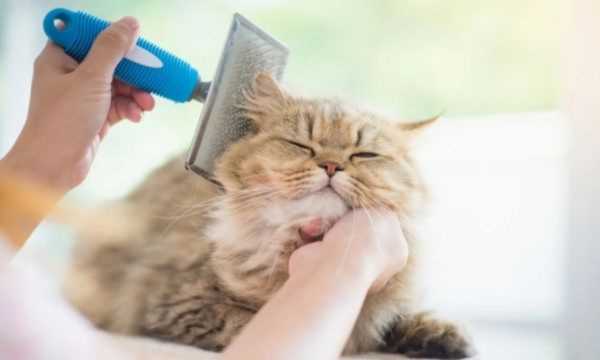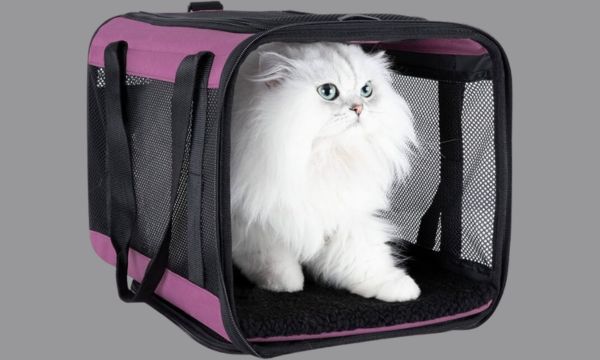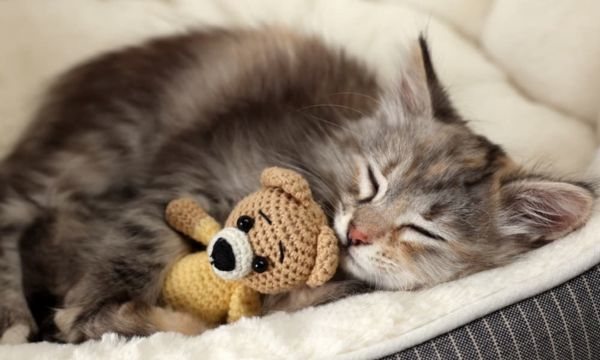Cats are not only wonderful companions, they also need proper care to keep them healthy and happy.
Regular grooming not only helps maintain your cat’s appearance, but also promotes good hygiene and prevents potential health problems.
In this article, we explore the essential cat grooming tools and techniques to keep your feline friend looking and feeling their best.
Beauty Tools
- Smoothing brush: The smoothing brush is ideal for removing loose fur and preventing tangles. The fine-grained bristles effectively reach the undercoat, making it an essential tool for long-haired cats.
- Bristles: Bristle brushes are ideal for short-haired cats. They help distribute natural oils, leaving the coat shiny and smooth.
- Fine Tooth Comb: This comb is ideal for removing tangles and mats from both long and short haired cats. Regular care prevents sores on the skin.
- Nail clippers: Trimming your cat’s nails is essential for your cat’s comfort and the safety of your furniture. Use a cat-specific nail clipper to avoid damaging the nails.
- Ear cleaner: Cats are prone to ear infections, so regular cleaning with a vet-approved ear cleaner can prevent problems.
- Toothbrush and toothpaste: The dental health of cats is often overlooked. Use a soft toothbrush and cat-friendly toothpaste to keep teeth clean and prevent dental problems.
Beauty Tips
- Start Early: Start grooming your cats when they are young. This helps them get used to the process and reduces anxiety..
- Tenderness: Cats are sensitive to their bodies. Stroke gently and avoid pulling on tangles to avoid discomfort..
- Regular grooming: Brush your cat’s coat regularly to prevent tangles and reduce shedding. Long-haired cats may need daily brushing, while short-haired cats can be brushed several times a week..
- Check for mats: Run your fingers through your cat’s fur to check for mats or tangles close to the skin. Use a fine-toothed comb to gently remove them..
- Trimming nails carefully: If you’re not familiar with nail trimming, ask your vet to demonstrate the proper technique. Be careful not to cut any living creatures as this will cause bleeding..
- Cleaning Ears and Teeth: While grooming, clean your cat’s ears with cotton balls and a vet-approved ear cleaner. Also, gradually incorporate brushing into your daily routine to keep your teeth healthy..
- Reward System: Always reward your cat after grooming with treats, praise or playtime. This positive reinforcement helped them associate nurturing with positive experiences..
- Watch for signs of stress: Pay attention to your cat’s body language. If they show signs of stress or irritability, take a break and resume grooming later.
Care Tips for Cats
While grooming is important, it’s also important to make sure your cat makes it an enjoyable experience.
Here are some tips for a cat-friendly grooming routine:
- Create a soothing environment: Choose a quiet and comfortable space to groom. Cats are more likely to relax in an environment where they feel safe.
- Use positive reinforcement: During the grooming session, offer treats, kind compliments, and reassuring words. This positive association can make your cat more cooperative.
- Take small steps: If your cat is new to grooming, start with short periods and gradually increase the time. This helps them get used to the process without getting overwhelmed.
- Let them smell tools: Before using any grooming tool, let your cat sniff and inspect it. This helps them become familiar with the tools and reduces anxiety.
- Massage and caress: Include gentle massages and caresses in your daily beauty routine. Not only will this relax your cat, but it will also help you identify sensitive areas that need special attention.
- Keep Calm: Cats can sense your emotions. If you stay calm, your cat is more likely to stay relaxed during grooming.
- Know when to stop: Pay attention to your cat’s signals. If they become restless or show signs of distress, grooming can be interrupted and resumed later.
- Consult a professional: If you are in any doubt or are having trouble with any aspect of grooming, seek advice from a professional groomer or vet immediately.

Cat Grooming Tools and Techniques-(Google Source)
Conclusion
Basically, cat grooming is not just about maintaining your cat’s appearance, but also ensuring their overall health and well-being.
By using the right grooming tools and techniques and approaching the process with patience and a cat-friendly attitude, you can create a positive and bonding experience for you and your feline companion.
Regular grooming sessions offer the opportunity to strengthen your relationship, detect potential health problems early and keep your cat’s coat shiny and mat-free. Remember that every cat is unique, so tailor your grooming routine to their individual preferences and needs.
With ongoing care, your cat will not only look its best, but also thrive under your loving care.
Frequently Asked Questions
1. How often should I groom my cat?
The frequency of grooming depends on the coat type of the cat. Long-haired cats may need daily grooming to prevent tangles, while short-haired cats can be groomed several times a week.
Regular nail trimming and ear cleaning are also important.
2. Can I use care products for my cat?
Grooming aids designed for cats are recommended. Human tools may not be suitable and may cause discomfort or injury. Choose brushes, combs and nail clippers designed specifically for cats.
3. My cat hates grooming. what can I do?
If your cat refuses to be groomed, start with short, aggressive treatments and gradually increase the duration. Use treats and gentle compliments to create positive associations with beauty.
If resistance persists, consult a professional groomer or veterinarian for advice.
4. How do you prevent the cat’s coat from matting?
Regular brushing is key to preventing tangles. Pay special attention to areas prone to tangles, such as behind the ears and under the legs. If you encounter mats, use a comb to gently comb them, and if they are severe, seek professional help.
5. Is it necessary to groom short-haired cats?
Yes, even short-haired cats can benefit from brushing their teeth. It helps remove loose fur, distribute natural oils and prevent hairballs. Plus, it’s a chance to bond with your cat and monitor its overall health.


